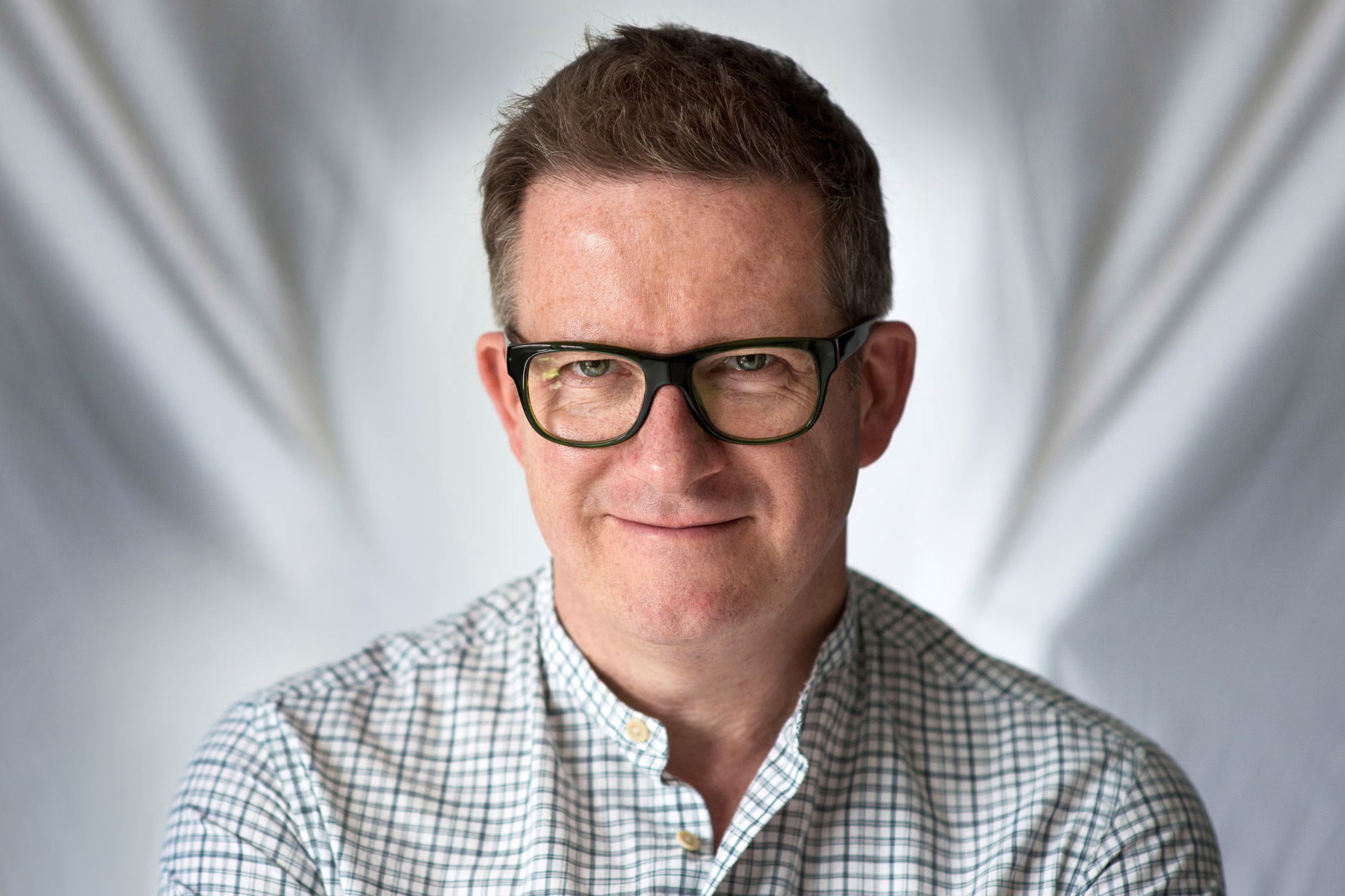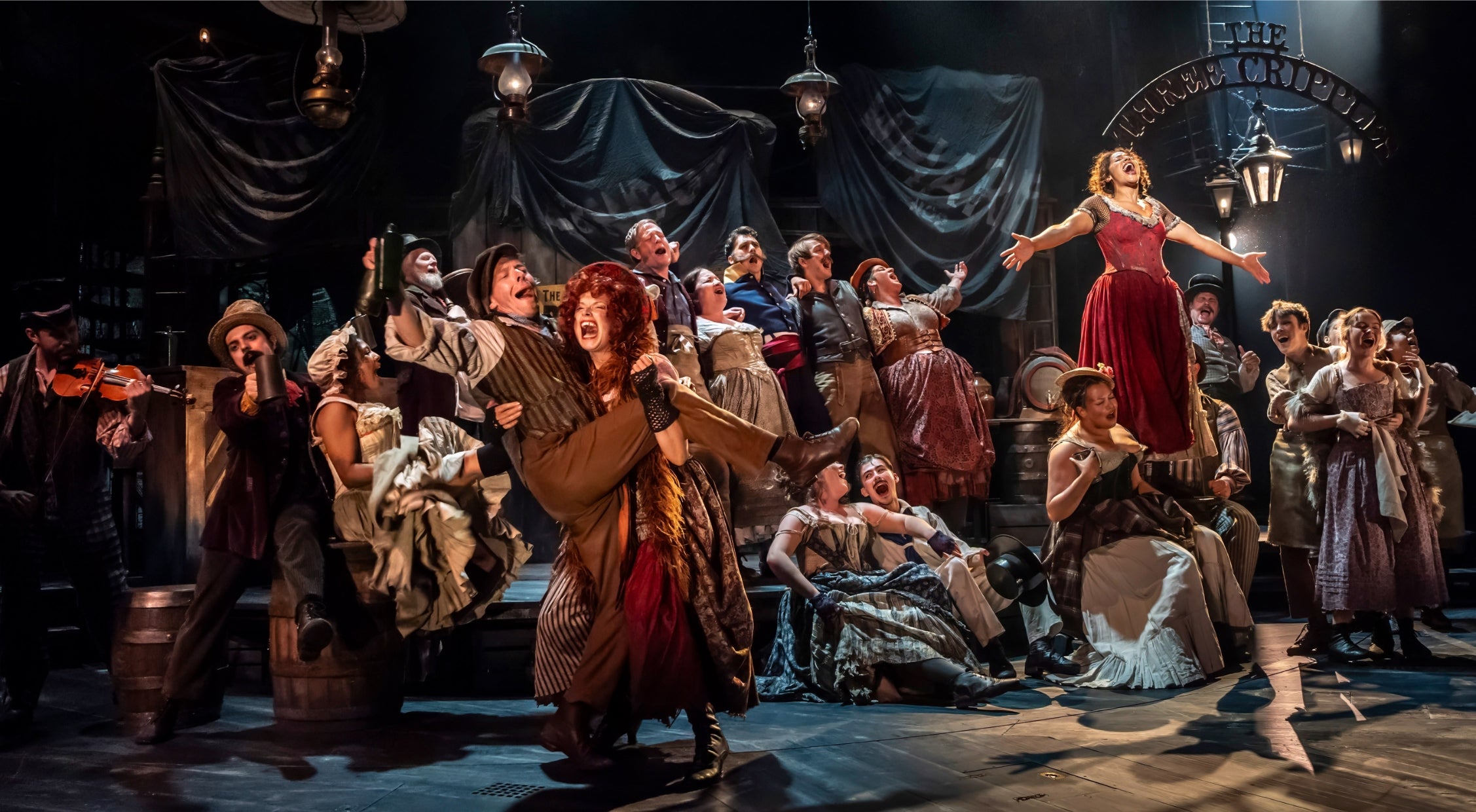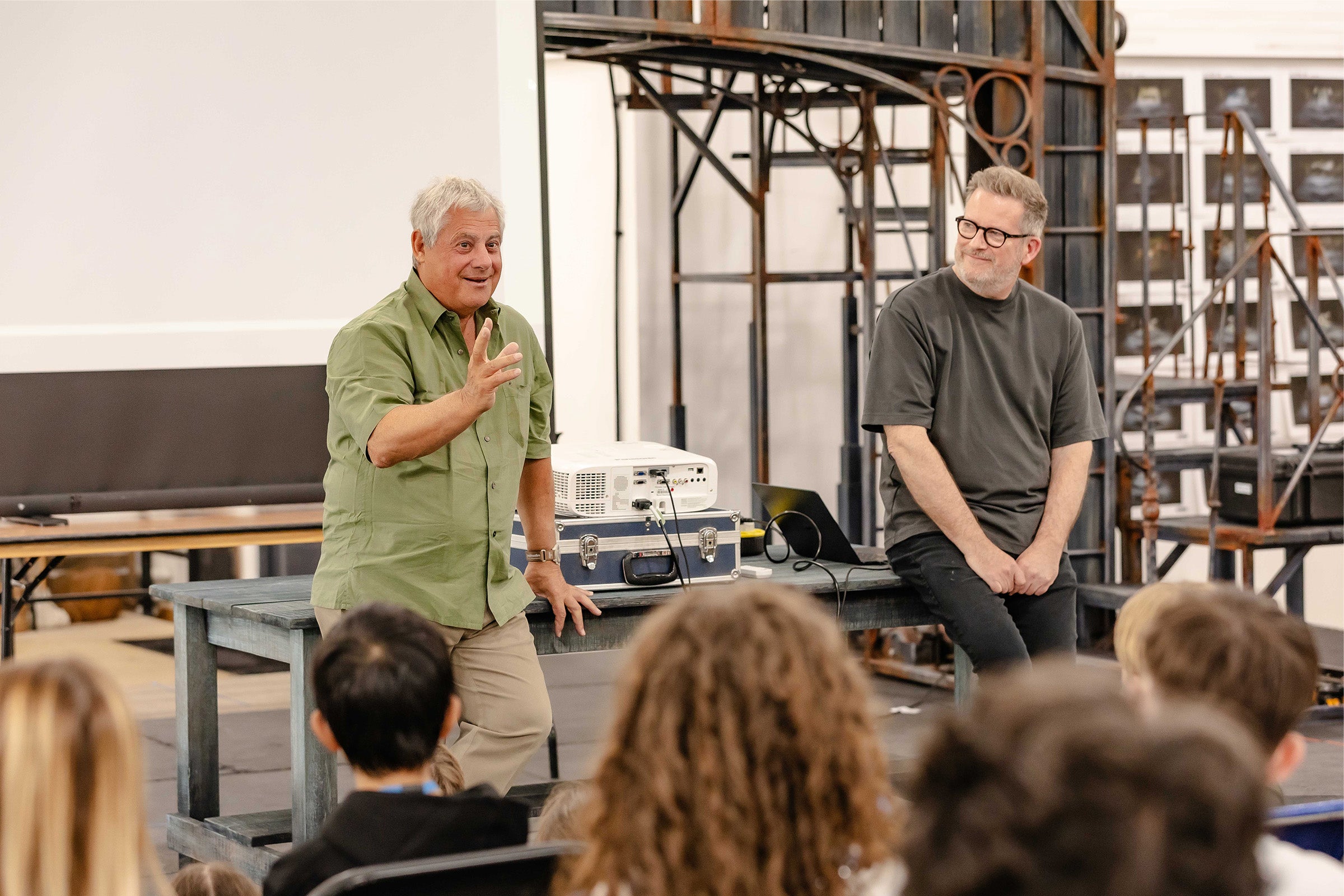Matthew Bourne: ‘I don’t understand why there aren’t more gay love stories in ballet’
The choreographer who changed how dance was perceived in Britain is now taking the reins of a major revival of ‘Oliver!’. He talks to Sarah Crompton about his memories of legendary composer Lionel Bart and why his musical is embedded in the DNA of British culture

Your support helps us to tell the story
From reproductive rights to climate change to Big Tech, The Independent is on the ground when the story is developing. Whether it's investigating the financials of Elon Musk's pro-Trump PAC or producing our latest documentary, 'The A Word', which shines a light on the American women fighting for reproductive rights, we know how important it is to parse out the facts from the messaging.
At such a critical moment in US history, we need reporters on the ground. Your donation allows us to keep sending journalists to speak to both sides of the story.
The Independent is trusted by Americans across the entire political spectrum. And unlike many other quality news outlets, we choose not to lock Americans out of our reporting and analysis with paywalls. We believe quality journalism should be available to everyone, paid for by those who can afford it.
Your support makes all the difference.When the choreographer Matthew Bourne was a teenager, he collected autographs. Waiting at stage doors on opening nights gave him a glimpse of the glamorous world of drama, music and movement that had caught his eye growing up in Walthamstow, and one of his prized signatures was from Lionel Bart, composer of Oliver! the musical.
In 1994, eight years after he launched his dance company, then known as Adventures in Motion Pictures, now as New Adventures, he met Bart again. This time, he was the almost unknown choreographer on a new production of that musical, which was being directed at the London Palladium by a young Sam Mendes and produced by Cameron Mackintosh.
“I had always loved him growing up,” says Bourne, smiling fondly as he remembers the pioneering British composer who died in 1999. “He was part of the spirit of London to me.” One of Bourne’s regular haunts as a young theatregoer was Joan Littlewood’s Theatre Workshop at Stratford East, the place where Bart developed his style. “I loved that world. I identified with East End culture, because both my parents were Walthamstow born and bred, going back generations. When I started to work with Lionel, it seemed like a lovely thing and we got on very well.”
By the time he met Bart, the composer had had “quite big ups and downs”, including alcoholism, bankruptcy and the loss of rights to his most popular show. For this production, Mackintosh generously involved him and gave him back a share of the royalties. “He was such a character. He’d always done everything before. You’d come up with an idea, and he’d say, ‘Yeah we did that in Blitz! [his 1962 musical] but give it a go, Matt, give it a go.’ And when he came to meetings, he used to phone ahead to see what the sandwiches were going to be. But the 1994 production was a lovely return for him. Audiences used to applaud him when they saw him in the auditorium.”
A year after their encounter, Bourne himself became a household name when his production of Swan Lake, with its phalanx of bare-chested male swans in shredded breeches, noses smeared with fierce black stripes, took the world by storm. It became the longest-running full-length ballet classic in the West End and on Broadway and, in the process, transformed Bourne from a talented independent choreographer into one of the most important figures in British dance.

This version of the story of a prince who succumbs to the magic of a male swan was sexy, raw and thrilling; it changed how dance was perceived. At the end of Stephen Daldry’s groundbreaking 2000 film Billy Elliot, the story of a miner’s son who longs to be a dancer, we see the grown-up Billy in soaring fulfilment of his ambition, and it was inevitable that it was Bourne’s original Swan (Adam Cooper) who made the leap. Generations of male dancers ever since have been inspired by that moment – and by Bourne’s ballets.
Now he is back working on Oliver! once more, this time directing a production designed by his long-time collaborator Lez Brotherston, who also designed Swan Lake. After a series of large-scale revivals, this stripped-back, fast-moving version takes the show back to its “poor theatre” roots. “It is going full circle in some ways, bringing it back to something that is more authentic, closer to how it was created in 1960,” he says.
Oliver! has run like a thread through 64-year-old Bourne’s life. His first encounter was with the 1968 film, which he saw on TV. He and his brother used to sing “Where Is Love?” and “Consider Yourself” as children, performing in the church hall shows that marked Bourne’s first tentative entry into the theatrical world that so attracted him.
Although Bourne has choreographed Mary Poppins and Trevor Nunn’s version of My Fair Lady, this production, which starts life at the Chichester Festival Theatre before heading into the West End, is the first time he has directed a musical. He’s done so at the specific request of Mackintosh, who now owns the rights to Oliver! and is credited with revisions and new material. “It was a piece I knew I could handle because I know it so well,” Bourne says. “It’s all about telling a story. I think that’s so important for any show, whether it’s dance, or a musical, or a play.”
Bourne talks quietly but with authority. A genial, easy-going presence in sweatshirt and jeans, he wears his multi-award-winning success and his knighthood (from 2016) lightly. In his own works, from Swan Lake to 2019’s Romeo and Juliet and The Red Shoes, with shows such as Sleeping Beauty and Edward Scissorhands en route, he has forged a style that places a strong emphasis on clear narrative. He never wants to leave an audience confused. He’s also built an aesthetic that embraces dancers who – however athletic – look like normal people.
Discussions about diversity and weight still crop up, particularly in the ballet world. But does Bourne feel that our acceptance of who can dance has changed since he first launched his company in 1986? “I think it has,” he says, firmly. “When you’re talking about ballet, it’s difficult because there is an aesthetic that is hard to get beyond for a lot of people.
“But what I feel is that the dancers we really love are all a bit flawed. They’re not quite perfect. They aren’t all about technique. A lot of dancers we love on film – like Fred Astaire or Eleanor Powell – are self-taught, it comes very much from them. They develop their own technique, as the [contemporary dance choreographer] Martha Graham did too. She wanted to perform so she developed a technique that suited her body.

“I think without realising it, we are used to seeing people who aren’t perfect by modern standards. Even Margot Fonteyn and Rudolf Nureyev. These are the greatest dancers in the world. I’d prefer it to go back to that individuality and character. To people with personal style. You always love someone dancing if they are really dancing. You don’t care about body shape. You get the joy of it. If they’re no good you don’t enjoy it. But if there is joy and truth and style, you love it.”
These opinions haven’t shifted since he fell for dance, watching movie musicals and coming under the spell of dancers such as Gene Kelly and Astaire. He didn’t come from a theatrical background – his dad worked for Thames Water and his mum as a secretary – but all his family loved musicals and encouraged his interest. After he left school, he took a job at the National Theatre bookshop, and embarked on a campaign of self-education.
“I hadn’t enjoyed the later years of school very much and I wasn’t inspired, so I got into educating myself about authors, reading and watching plays. I realised one of the things I had never seen was an opera or a ballet. So, I thought I’d go and see a famous one. It really was on that level.” But once he started to watch ballet, he was hooked. “I loved the preservation of something historic,” he says. “It was incredibly exciting to think there was this whole world to discover of pieces that were wordless and full of dancing.”
That initial adventure led to watching contemporary dance as well. But he had no idea how to turn his passion into a career, until a friend suggested that since he liked staging shows, he might consider applying for the Laban Dance Centre, now the Trinity Laban Conservatoire of Music and Dance. The first contemporary dance class he took was at his audition for Laban at the age of 22 – and the decisive factor that allowed him to take up a place was a local authority grant.
That background colours his attitude to the new culture secretary Lisa Nandy and how he hopes she will improve access for young people to the arts. “Access to the inspiration by seeing work has to be the most important thing,” he says. “I had the inspiration, but it took a while for me to make it happen. It was the next step I couldn’t see – the idea that I could actually do that. The possibility of going into training and of the subject being studied at school. You have got to kick it off somehow, and that’s what I think is most important.”
We are used to seeing people who aren’t perfect by modern standards. Even Margot Fonteyn and Rudolf Nureyev
He notes that part of the diversity of New Adventures is socio-economic. “Quite often the dancers in our company come from backgrounds that aren’t privileged. Historically, over the years, quite a lot of people have found a home with us who haven’t had the sort of rarefied training that maybe some of the people in the bigger companies have had. The pathway has been more of a struggle.”
He has very consciously encouraged people into dance with the foundation of donor-funded Cygnet and Swan schools, that provide workshops and training sessions where talent has a chance to develop and find its way. Often, they had been inspired by seeing Swan Lake which returns this autumn for a 30th-anniversary tour. Although all his shows are popular, this rethinking of a classic caused the most powerful reverberations. “It always has this impact on people. Its image has gone beyond the dance world,” he says.
When he first gave interviews about the ballet in 1995, he notices that he was very cautious about the suggestion that it was a gay Swan Lake. “I don’t completely deny that it’s part of the story, but I talk about it being a father figure, about the Swan being an animal, a symbol not a man,” he says, thoughtfully. “I think I was a product of the time and at that point there was a feeling that it could be a negative thing, which you would never think about now.
“Now I would talk much more openly and happily about the fact that a love between two men is a very big part of the success of the show and the story that we are telling. I think I would say that it is about a prince who is one of the few people left in society who would find it difficult to be gay, to come out. That is what he is struggling with and it becomes more and more apparent to him. It has meant a lot to gay audiences over the years.
“I am still conscious that you don’t want to rule out everyone else, though. People do get moved by it in different ways. There’s also something about someone who is attracted to someone who represents the things they can’t be themselves. The freedom and the spirit and the wildness. That’s the universality of the piece.”
Bourne’s own sexuality has never been an issue to him; he has been with his husband, the choreographer Arthur Pita, since Pita danced as a swan in the 1995 production. Every work he makes features a gay relationship, presented as part of the scene, without comment. “We’ve always done it. There have always been little subplots. It’s a personal thing. It’s something that I know about so it’s a reflection of me and I think it’s important to reflect your own life. It’s something I can offer and I do.” It surprises him, therefore, that there are not more gay love stories in ballet. “It’s been proven that it can work for a wide audience, and I don’t understand why, particularly in a world where a lot of gay men work, it hasn’t come to the fore.”
It’s one example of the way in which, although dance has changed so much – and been changed by Bourne – it remains traditional. “Swan Lake opened up the possibility of change, but we are still waiting in some ways.”
He is about to begin rehearsals for Swan Lake, but for now he’s totally consumed by Oliver!. “I think Oliver! is more than a classic musical. It’s part of our DNA, embedded in British culture,” he says. “There’s even an Oliver! poster up in the EastEnders pub, which says quite a lot. It’s a show people feel is theirs and that’s partly due to Lionel Bart’s spirit, his belief in the singsong, the join-in, the family, the bring us all together. That was him. That’s the spirit he brings. It’s a fine life, despite everything.”
Oliver! is at Chichester Festival Theatre from 8 July to 7 September; it transfers to the Gielgud Theatre, London from 14 December
Join our commenting forum
Join thought-provoking conversations, follow other Independent readers and see their replies
Comments